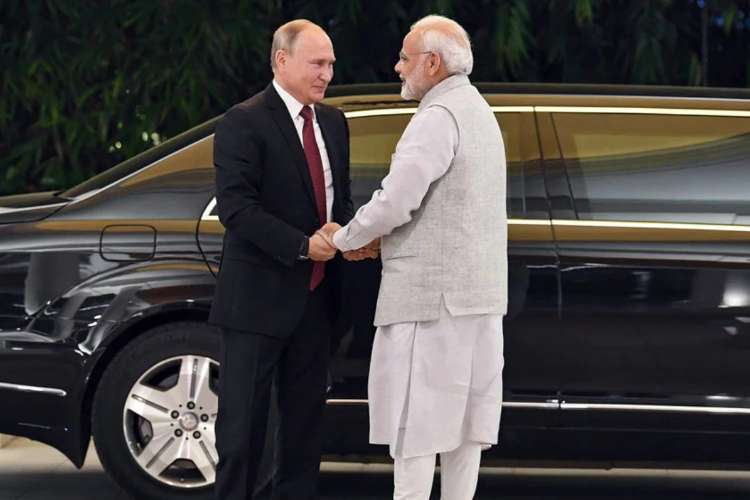India-Russia ties may withstand tariff threats: India finds itself caught in one of the most complex geopolitical crossfires in recent years. US President Donald Trump’s latest barrage — 25% tariffs on Indian goods, threats of secondary sanctions, and criticism of India’s Russian oil purchases — comes at a time when global inflationary pressures are rising and energy prices remain volatile. Washington’s unilateralism collides with a hard truth: India cannot afford to jeopardise its long-standing strategic ties with Russia merely to accommodate American anxieties. The India-Russia relationship has far deeper roots than discounted crude oil.
To reduce the India-Russia ties to oil trade is to ignore its historical and strategic breadth. Russia remains India’s principal defence supplier. Over 60% of India’s conventional military hardware originates from Russian platforms — ranging from Sukhoi fighter jets and T-90 tanks to the S-400 air defence system. In nuclear energy, too, Russia is a partner of choice, having built nuclear reactors in Tamil Nadu’s Kudankulam and agreed to expand further civil nuclear cooperation.
READ I Fixing the gender gap in India’s ride-hailing services
India-Russia ties — beyond crude
In recent years, India-Russia ties have diversified to include cooperation in space technology, Arctic exploration, and emerging technologies. India’s outreach to the Global South — particularly its positioning in forums like BRICS and the Shanghai Cooperation Organisation — also runs parallel to Russia’s strategic posture. Severing or scaling down this multifaceted partnership under duress would not only disrupt existing security arrangements but also erode India’s hard-earned diplomatic autonomy.
The numbers speak for themselves. As of June 2025, Russian crude made up 43.2% of India’s total oil imports — more than the combined share of Iraq, Saudi Arabia, and the UAE. This pivot, driven by deep discounts post-Ukraine war, helped India shield itself from price shocks and inflationary spikes in the aftermath of the global energy crisis. Importantly, Russian oil is not under UN sanctions. India’s purchases technically comply with the G7-imposed price cap, and the government has maintained that its buying is guided solely by commercial and national interest considerations.
Even with contingency plans to diversify supply, a sudden halt would be impractical. India would require at least three to four months to replace over 2 million barrels per day—assuming alternative suppliers are willing and able to meet that demand at a competitive price. The fallback to traditional Gulf suppliers or US shale oil would raise the import bill significantly, potentially worsening the current account deficit and fanning inflation.
The trade tightrope
The situation is further complicated by the centrality of the US in India’s broader economic engagement. The US has emerged as India’s largest trading partner for four consecutive years, with bilateral trade hitting $131.8 billion in 2024–25. India’s exports to the US grew by 11.6% last fiscal, and the trade surplus with Washington now exceeds $41 billion. Technology partnerships, defence collaboration, and a shared strategic interest in countering Chinese expansionism have further cemented the India-US axis.
Yet, Trump’s recent outburst — labelling both India and Russia dead economies — and his claim of doing very little business with New Delhi suggest a transactional outlook that disregards this layered relationship. His threats of secondary sanctions, especially those targeting Indian refiners like Nayara Energy (backed by Russia’s Rosneft), may push New Delhi into a corner. But India’s foreign policy has long resisted zero-sum alignments. Walking away from Russia to placate an unpredictable Washington could amount to geopolitical self-harm.
New sanctions, old friends
Europe, too, has joined the pressure campaign, banning imports of fuels refined from Russian crude even when processed in third countries like India. This adds another layer of compliance complexity for Indian refiners. NATO’s recent warnings that countries like India, China, and Brazil could be hit hard by secondary sanctions underline the increasing assertiveness of Western policy.
However, Russia has not retaliated with coercion. Instead, it has offered partnership with continuity. Its ambassador to India recently described Western threats as “a time bomb” under its own relationships with India. Moscow, he said, had never built ties with New Delhi at the expense of others — a subtle reminder of its consistent posture and respect for India’s sovereignty.
Indeed, India’s so-called de-risking strategy — widening its crude sourcing slate from 27 to over 40 countries — is a hedge, not a withdrawal. The aim is to optimise refinery economics and ensure energy security, not to jettison a valuable partner.
Strategic autonomy must endure
India’s foreign policy doctrine has traditionally balanced principles with pragmatism. Whether it was Indira Gandhi’s Soviet tilt during the Cold War or Atal Bihari Vajpayee’s strategic embrace of the US, the core goal has been to maximise national interest without surrendering autonomy.
The current government would do well to uphold this tradition. India’s energy security, defence preparedness, and geopolitical leverage are too important to be subordinated to any one power’s policy whims—especially one as mercurial as Trump’s. It is also worth noting that Trump’s posture is not bipartisan; a future administration may take a less combative approach. India should, therefore, avoid reactive decisions that compromise long-term strategic interests for short-term diplomatic convenience.
This does not mean ignoring American concerns altogether. India must engage constructively, offer transparency on its purchases, and explore middle-ground options like gradual scaling down or capped purchases if the global situation deteriorates. At the same time, India must assert that its policy decisions will be guided by sovereign interests, not external pressure.
India stands at a juncture where energy economics, trade dynamics, and strategic autonomy converge. While it must prepare for higher oil import costs and political turbulence, abandoning Russia is neither practical nor prudent. The challenge lies in maintaining a calibrated posture—resisting undue coercion, signalling flexibility, and retaining room for manoeuvre in a world where alliances are being redrawn.
New Delhi must remember: partners may be many, but dependable friends in crisis are few. In a deeply polarised world, staying non-aligned may be old-fashioned, but staying independent is still wise.

